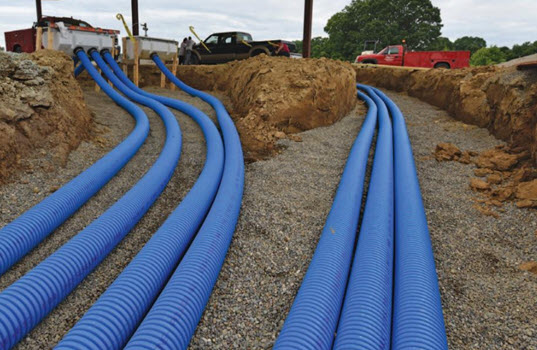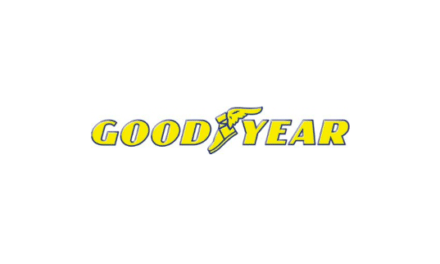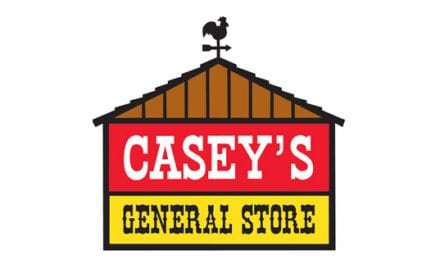By Ed Kammerer, OPW
Not many people would prefer to purchase a smartphone “kit” and construct the device themselves. The same goes for a microwave oven, lawnmower and, heaven forbid, automobile. Most consumers would rather have the “experts” at the factory take care of that for them. Purchasing a pre-fabricated, “plug-and-play” fueling system for a retail fueling location, however, was traditionally not an option for contractors and site owners.
Not until 10 or so years ago, that is.
That’s when the Loop System for underground fueling was created. This innovation signaled a paradigm shift in fueling-site construction. The genius behind it is that all of the components in the underground fuel-delivery and containment-sump systems, along with all ancillary equipment, are pre-fabricated and pre-assembled at the factory. This design eliminates more than 50% of the in-field fabrication and assembly work that used to be required when installing an underground retail-fueling system.
Loving The Loop
The ways that the pre-fabricated underground fueling loop system can streamline installation at the site are many:
- Installation times that can take as little as one day, as opposed to three or four
- Drastically reduces the number of pipe fittings and associated assembly labor
- Pre-fabricated quick-couple dispenser sumps come from the factory with entry boots, stabilizer bars and impact valves already in place, making them fast and simple to install
- Eliminates the need to measure, cut, thread and install steel or flexible riser pipes
- Eliminates the need for expensive flex connectors, which can be prone to failure that will result in fuel leaks
- Built-in test fixtures eliminate the need for the installation of rubber test boots
- Pre-fabricated and installed rigid entry fittings (REF) prevent groundwater intrusion and fuel contamination
- UL971-listed coaxial pipes have no exposed joints or fittings, meaning they require no adhesive or welding to be installed
- Stainless-steel, double-wall couplings (DPC) eliminate the need to cut back the piping’s secondary jacket to access to the pipe’s interstitial space.
- Eliminates the need to adjust the height of the dispenser sumps in the field
- Pre-fabricated tank sumps do not need holes cut in them for conduits, which eliminates a notorious leak point
- Pre-assembled emergency shut-off valves protect against low-impact fractures in the fuel dispenser’s shear groove, which reduces the risk that undetected dispenser leaks will occur
- Eliminates the need to try to make a curved pipe go straight
- Shallow, angled dispenser sumps resist groundwater forces and are quicker and less expensive to hydrostatically test.
- One part number for the sump and all components mean fewer parts to stock and install, which makes it easier to spec out the material list when ordering the system
The overriding benefit of the underground fueling loop system is that the reduced amount of complicated in-the-field plumbing work that needs to be done correspondingly reduces the risk that errors will occur during assembly. These errors can later manifest themselves in leaks that may go undetected for a period of time, meaning that the safety of the site and the environment may be compromised. The leaks will also eventually need to be repaired, which is an expensive proposition in and of itself, while also leading to fuel-island downtime that will negatively impact the fueling operation’s bottom line.
The reduction in installation complexity that the underground fueling loop system offers also serves to enhance the long-term reliability of the system. This allows the fuel-site operator to attain a higher level of overall environmental protection and identify any potential problems that may develop before there is a safety issue.
Hey, What About Us?
The new standard that the underground fueling loop system set is reflected in the thousands of installations that have been completed in the 10-plus years since its introduction.
The original loop system was truly designed to meet the needs of traditional service stations and convenience stores that have a fuel offering. The system’s 1.5- to 2-inch coupling, coaxial pipes, shear valves and entry fittings were the perfect size to deliver the typical 10 gallon-per-minute (gpm) flow rates that are required when fueling automobiles.
The retail-fueling landscape, however, is constantly evolving, and since the introduction of the underground fueling loop system, there has been a noticeable uptick in the number of high-volume fueling sites that are being built. Namely, these sites are the large truck stops that can feature 10 to 20 fueling lanes and the “hybrid” convenience stores that have traditional automobile fueling in the forecourt and separate trucks-only fueling lanes elsewhere on the property.
These sites could not be serviced by the traditional loop system because it could not produce the 30-gpm and higher fuel flow rates that are required to expeditiously fill a long-haul truck’s fuel tanks. In addition, the offset product inlets in high-speed dispensers created a challenge for pre-fabricated sumps.
Recognizing the requirements of this growing market segment, the developers of the original underground fueling loop system have created a “high-flow” version. Essentially, the high-flow system takes the components of the original system and “supersizes” them so that they can deliver the flow rates needed by truck stops and hybrid c-store fueling sites:
- Pre-fabricated loop sumps to accommodate high-speed dispenser footprints, which allow high-volume flow rates while also accommodating fuel dispensing on both sides of the truck, including a satellite lane
- 3-inch (up from 1.5- and 2-inch) double-sided flexible/rigid entry fittings (RBF) that provide double containment protection that prevents fuel contamination and groundwater intrusion
- 3-inch (up from 1.5- and 2-inch) UL971-listed coaxial pipe that is easy to install, requires no adhesive or welding, and eliminates leak points and exposed joints and fittings
- 3-inch (up from 1.5- and 2-inch) double-wall, stainless-steel pipe couplings (DPC) that eliminate the need for a rubber test boot and the trimming back of secondary jackets, while allowing for continuous monitoring
- 6-inch (up from 4-inch) access pipes that resists crushing and allow easy access and pipe retraction for maintenance, repair, removal and replacement without ever breaking concrete
Of course, all of these components are pre-fabricated and pre-assembled at the factory. In fact, this capability may be even more beneficial to the operators of high-volume truck-fueling operations. Most of these types of locations generally use large-diameter fiberglass pipe over long piping runs that require lots of labor-intensive connections and gluing. Additionally, while a typical gasoline station may have 50 connections in its fueling system, a truck stop may require upwards of 300 to 400 connections to be made since there are trunk and satellite fuel lines branching out of every piping run.
Conclusion
Why should traditional gasoline stations have all the fun? In fact, they shouldn’t, which is why the high-flow underground fueling loop system has been developed. Building on the pre-fabricated and pre-assembled design of the original, the high-flow loop system stands ready to provide optimized installation times and inventory, maintenance and repair costs, while taking high-volume fueling-site efficiency and safety to an even higher level.
 Ed Kammerer is the Director of Global Product Management for OPW, based in Cincinnati, OH, USA. He can be reached at [email protected]. OPW is defining what’s next in fueling solutions and innovations worldwide. OPW delivers product excellence and the most comprehensive line of fueling equipment and services to retail and commercial fueling operations around the globe. For more information on OPW, please go to opwglobal.com.
Ed Kammerer is the Director of Global Product Management for OPW, based in Cincinnati, OH, USA. He can be reached at [email protected]. OPW is defining what’s next in fueling solutions and innovations worldwide. OPW delivers product excellence and the most comprehensive line of fueling equipment and services to retail and commercial fueling operations around the globe. For more information on OPW, please go to opwglobal.com.
Shear Magic
 Knowing that any fuel leak, no matter how small, is significant, the developer of the high-flow looping underground fuel system has also created a 2-inch version of the emergency shut-off valve that is used to protect against the hazards that can arise from undetected shear-groove leaks that are caused by low-impact incidents at the fuel dispenser. The upsized valve matches the high-flow inlets of the dispenser while allowing the larger diameter 3-inch pipe to connect to the valve.
Knowing that any fuel leak, no matter how small, is significant, the developer of the high-flow looping underground fuel system has also created a 2-inch version of the emergency shut-off valve that is used to protect against the hazards that can arise from undetected shear-groove leaks that are caused by low-impact incidents at the fuel dispenser. The upsized valve matches the high-flow inlets of the dispenser while allowing the larger diameter 3-inch pipe to connect to the valve.
The patent-pending design of this valve prevents fuel from leaking into dispenser sumps, which helps reduce the risk of fire, explosion, personal injury, property damage, environmental contamination, product loss and exorbitant site cleanup costs. In the event of a dislodged or pulled-over dispenser, the valve’s fusible link releases to automatically close the valve, which greatly reduces the fire hazard.
The valve features a cast-iron top and body, and has been quality and field-tested to ensure that it will operate effectively in a truck stop or hybrid c-store installation. The valve is also listed by both UL and ULc.









